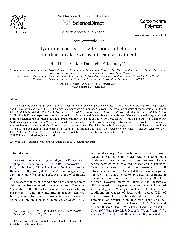摘要
A chitosan molecule with polymerization of 25 was simulated using Hyperchem Release 7.1 for Windows Molecular Modeling System, and the hydration energies of the 1,4-beta-D-ghlCosidic bonds were computed. As a result, the hydration energies of the glucosidic bonds are: GlcNAc-GIcNAc (0.85 kcal/mol) > GlcN-GlcNAc (0.75-0.76 kcal/mol) GlcNAc-GlcN (0.74-0.75 kcal/mol) > GlcN GlcN- (0.65-0.67 kcal/mol). Former experimental results showed that chitosans with higher deacetylation degree (DD) are more easily degraded, and ultrasonic degradation decreased the DD of initial chitosans with a lower DD (< 90%), but the DD of initial chitosans with a higher DD (> 90%) changed no more than 2%. It is concluded from the analysis that the hydration energy between 1,4-beta-D-glucosidic bonds of chitosan may be closely related to the breakdown by ultrasonic treatment. The higher the hydration energy is, the more difficult the breakdown will be. So the degradation of chitosan by ultrasound is not random; it follows the sequence: GIcN GIcN > GIcNAc-GIcN approximate to GlcNG-GIcNAc > GlcNAc-GIcNAc. This conclusion appropriately supports the above experimental results.
- 出版日期2007-4-5
- 单位中国地质大学(北京); 武汉大学
